-
 Bitcoin
Bitcoin $84,127.0016
-3.72% -
 Ethereum
Ethereum $1,879.7424
-7.07% -
 Tether USDt
Tether USDt $0.9994
-0.05% -
 XRP
XRP $2.1915
-7.19% -
 BNB
BNB $625.7614
-2.14% -
 Solana
Solana $129.4351
-7.01% -
 USDC
USDC $1.0001
0.00% -
 Dogecoin
Dogecoin $0.1804
-6.98% -
 Cardano
Cardano $0.6993
-5.37% -
 TRON
TRON $0.2314
-0.57% -
 Toncoin
Toncoin $3.9454
0.66% -
 Chainlink
Chainlink $14.2452
-9.56% -
 UNUS SED LEO
UNUS SED LEO $9.7196
-0.54% -
 Stellar
Stellar $0.2740
-4.68% -
 Avalanche
Avalanche $20.0814
-9.26% -
 Sui
Sui $2.5461
-6.90% -
 Shiba Inu
Shiba Inu $0.0...01319
-8.16% -
 Hedera
Hedera $0.1821
-5.30% -
 Polkadot
Polkadot $4.3046
-6.79% -
 Litecoin
Litecoin $87.4004
-7.02% -
 MANTRA
MANTRA $6.2982
-4.50% -
 Bitcoin Cash
Bitcoin Cash $308.3156
-5.80% -
 Bitget Token
Bitget Token $4.6810
-7.08% -
 Pi
Pi $0.8276
1.13% -
 Dai
Dai $0.9999
-0.01% -
 Ethena USDe
Ethena USDe $0.9990
0.01% -
 Hyperliquid
Hyperliquid $13.6621
-5.66% -
 Monero
Monero $219.7113
-1.58% -
 Uniswap
Uniswap $6.1847
-9.39% -
 Aptos
Aptos $5.5407
-6.88%
How to determine whether the transaction is stuck when transferring money through Ethereum wallet?
Ethereum transactions can get "stuck" due to network congestion or insufficient gas fees. Use a blockchain explorer (like Etherscan) with your transaction hash (TXID) to check its status; a pending transaction for an extended period may indicate a problem.
Mar 23, 2025 at 02:21 pm
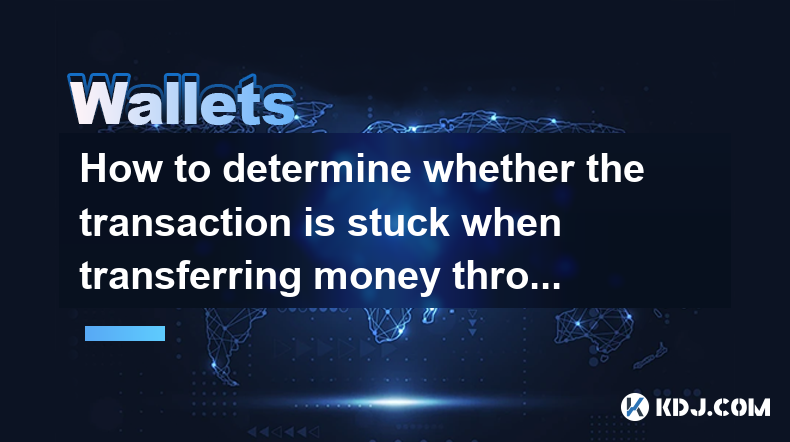
How to Determine Whether a Transaction is Stuck When Transferring Money Through an Ethereum Wallet
Transferring cryptocurrency, especially on a network like Ethereum, can sometimes feel like waiting for paint to dry. Network congestion and high gas fees can lead to transactions appearing "stuck," leaving users in a state of uncertainty. This article will guide you through identifying and understanding stuck Ethereum transactions.
First, understanding what constitutes a "stuck" transaction is crucial. A transaction isn't necessarily stuck just because it's taking a long time. Ethereum's network speed varies significantly depending on network congestion. A slow transaction is different from a genuinely stuck one. A truly stuck transaction is one that remains pending indefinitely, neither confirming nor failing.
To check the status of your transaction, you'll need your transaction hash (TXID). This alphanumeric string uniquely identifies your transaction on the blockchain. You'll find this in your wallet's transaction history. Once you have the TXID, you can use a blockchain explorer like Etherscan.io or similar services.
Using a blockchain explorer is the most reliable method for determining the status of your Ethereum transaction. Paste your TXID into the explorer's search bar. The explorer will show you the transaction's status – pending, confirmed, or failed. A "pending" status might indicate a slow transaction, while a "failed" status means the transaction was unsuccessful. If the transaction remains pending for an extended period, it's a strong indication that it might be stuck.
Several factors can cause an Ethereum transaction to get stuck. High gas fees are a common culprit. If you set your gas fee too low, miners might prioritize other transactions with higher fees, leading to your transaction remaining pending. Network congestion, a large number of transactions competing for processing, can also significantly delay confirmation times.
Another potential issue is an incorrect recipient address. Double-check the address you entered to ensure accuracy. Even a single incorrect character can render your transaction irrecoverable. Furthermore, some wallets might have issues, causing transactions to fail or appear stuck. Try restarting your wallet or using a different one if possible.
If you suspect your transaction is truly stuck, there are a few things you can attempt. However, it's important to remember that many of these are not guaranteed to work, and you should proceed with caution.
- Wait: Sometimes, patience is the best approach. Network congestion can eventually ease, allowing your transaction to be processed.
- Increase Gas Fee (with caution): You can try broadcasting the same transaction again with a significantly higher gas fee. This increases the likelihood that miners will prioritize your transaction. However, this doesn't guarantee success, and you might lose the initial gas fee.
- Contact Your Exchange/Wallet Provider: If you used a centralized exchange or wallet service, contact their support team for assistance. They may be able to help resolve the issue.
Understanding the reasons behind a stuck transaction is key to resolving the problem. Network congestion is often the primary culprit, but issues with gas fees, incorrect addresses, or wallet malfunctions can also cause delays or failures. Always double-check your information before initiating a transaction.
Frequently Asked Questions:
Q: How long should I wait before considering a transaction stuck?
A: There's no set timeframe. Network conditions vary. However, if a transaction remains pending for several hours or even a day, especially during periods of normal network activity, it's cause for concern.
Q: What happens if my transaction is truly stuck?
A: Unfortunately, in many cases, a truly stuck transaction means the funds are effectively lost. The chances of recovery depend on the specific cause and the resources available.
Q: Can I cancel a pending Ethereum transaction?
A: You can't directly cancel a pending transaction. You can try resubmitting it with a higher gas fee, hoping the new transaction will supersede the old one. However, this doesn't guarantee success, and you'll likely lose the gas fee from the original transaction.
Q: Is there a way to recover funds from a stuck transaction?
A: Recovery is difficult and depends on the cause. If it's due to a simple error like an incorrect address, recovery might be impossible. If it's due to a wallet issue, contacting the wallet provider might be helpful.
Q: How can I prevent transactions from getting stuck?
A: Always use a reputable wallet, double-check recipient addresses, monitor network congestion before sending large transactions, and set appropriate gas fees, slightly above the average suggested fee. Consider using a transaction accelerator service to help prioritize your transaction.
Q: What are gas fees and why are they important?
A: Gas fees are transaction fees paid to miners for processing transactions on the Ethereum network. Higher gas fees incentivize miners to prioritize your transaction, reducing the risk of it getting stuck. However, excessively high fees can also be costly.
Q: What is a blockchain explorer, and how does it help?
A: A blockchain explorer is a website that allows you to view transactions and blocks on a blockchain. By inputting your transaction hash, you can see the status of your transaction (pending, confirmed, or failed). It provides crucial information for troubleshooting.
Disclaimer:info@kdj.com
The information provided is not trading advice. kdj.com does not assume any responsibility for any investments made based on the information provided in this article. Cryptocurrencies are highly volatile and it is highly recommended that you invest with caution after thorough research!
If you believe that the content used on this website infringes your copyright, please contact us immediately (info@kdj.com) and we will delete it promptly.
- Price Prediction for XYZVerse ($XYZ): Is a 30x Jump Possible?
- 2025-03-28 23:10:12
- Growt Wallet Hits a Key Milestone with Its MVP Ready and Gears Up for the July Launch of Its GRWT Token
- 2025-03-28 23:10:12
- The meme coin market is surging as investors prepare for the long-awaited meme coin supercycle to kick off.
- 2025-03-28 23:05:11
- Top 5 PR Agencies in Emerging Tech & Web3 in 2025
- 2025-03-28 23:05:11
- Numerous crypto whales watch Litecoin (LTC) intently, with large accumulation patterns identified within the on-chain data.
- 2025-03-28 23:00:12
- The renowned MMA promotion known for its unconventional and entertaining events Full Metal Dojo is set to launch its own cryptocurrency called Dojo Coin. This innovative move aims to support fighters and enhance fan engagement through blockchain technolog
- 2025-03-28 23:00:12
Related knowledge
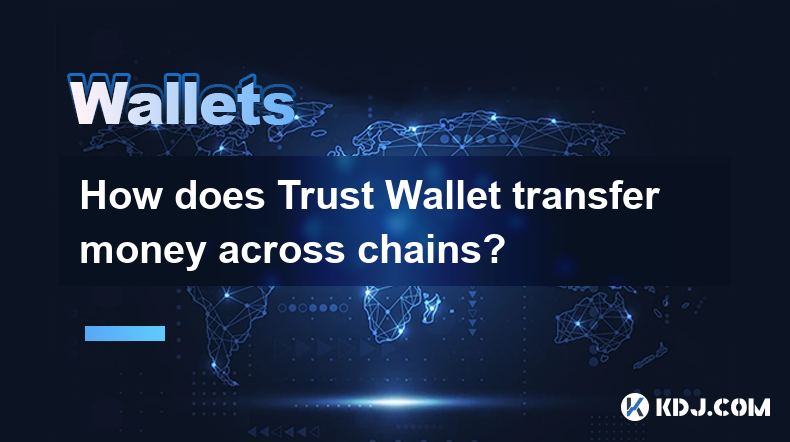
How does Trust Wallet transfer money across chains?
Mar 28,2025 at 10:49pm
Understanding Cross-Chain Transfers with Trust WalletTrust Wallet doesn't directly 'transfer money' in the traditional sense. Instead, it facilitates the movement of cryptocurrency assets between different blockchains. This process, known as a cross-chain transfer, involves several steps and often utilizes intermediary protocols or bridges. Understandi...
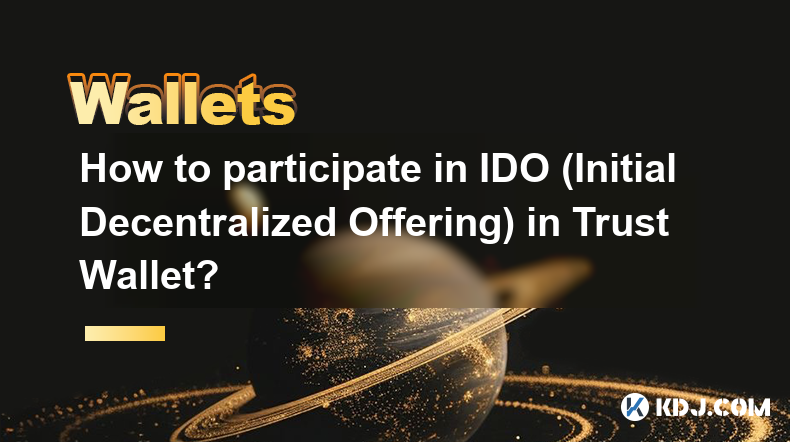
How to participate in IDO (Initial Decentralized Offering) in Trust Wallet?
Mar 28,2025 at 10:42pm
Understanding IDOs and Trust Wallet's RoleInitial Decentralized Offerings (IDOs) are a fundraising method used by cryptocurrency projects to raise capital. Unlike Initial Coin Offerings (ICOs), IDOs leverage decentralized exchanges (DEXs) to distribute tokens, often minimizing the risks associated with centralized platforms. Trust Wallet, a popular mob...
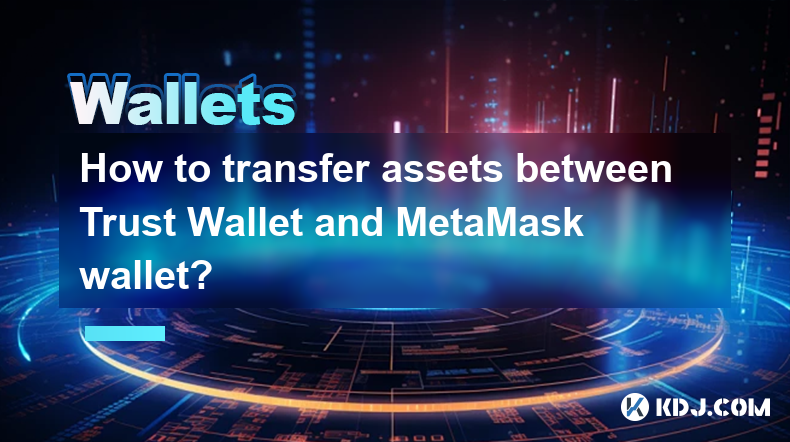
How to transfer assets between Trust Wallet and MetaMask wallet?
Mar 28,2025 at 09:56pm
Understanding the ProcessTransferring assets between Trust Wallet and MetaMask involves moving your cryptocurrencies from one digital wallet to another. This process requires careful attention to detail to avoid errors and potential loss of funds. Both Trust Wallet and MetaMask are popular choices, but they function differently. Trust Wallet is a custo...
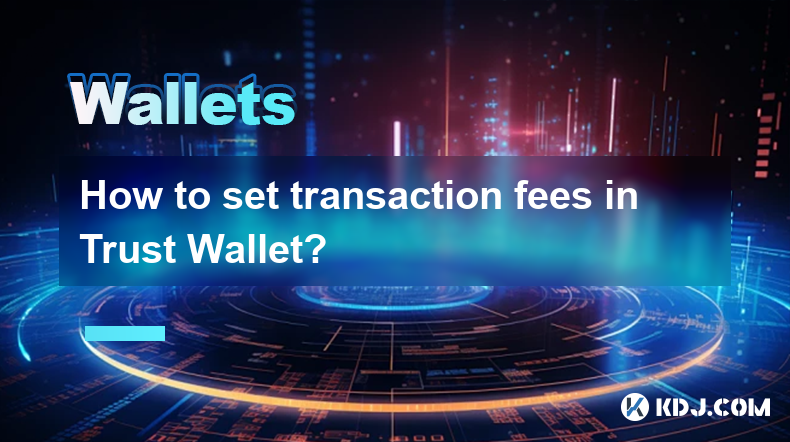
How to set transaction fees in Trust Wallet?
Mar 28,2025 at 10:36pm
How to Set Transaction Fees in Trust Wallet Trust Wallet, a popular mobile cryptocurrency wallet, allows users to manage their digital assets efficiently. However, understanding and setting transaction fees, or gas fees as they are often called, is crucial for successful transactions. This article will guide you through the process, explaining the nuanc...
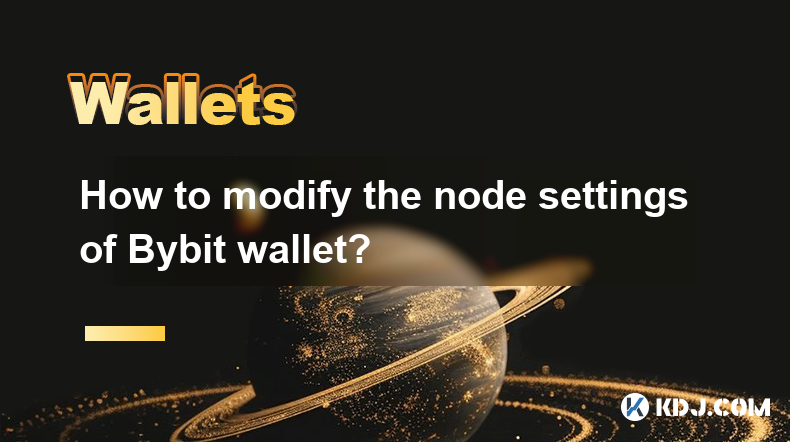
How to modify the node settings of Bybit wallet?
Mar 28,2025 at 10:21pm
Bybit, a popular cryptocurrency exchange, offers a wallet service that allows users to store and manage their digital assets. Understanding and modifying your Bybit wallet's node settings is crucial for optimal performance and security. However, it's important to note that Bybit's wallet doesn't directly expose node settings in the same way as some oth...
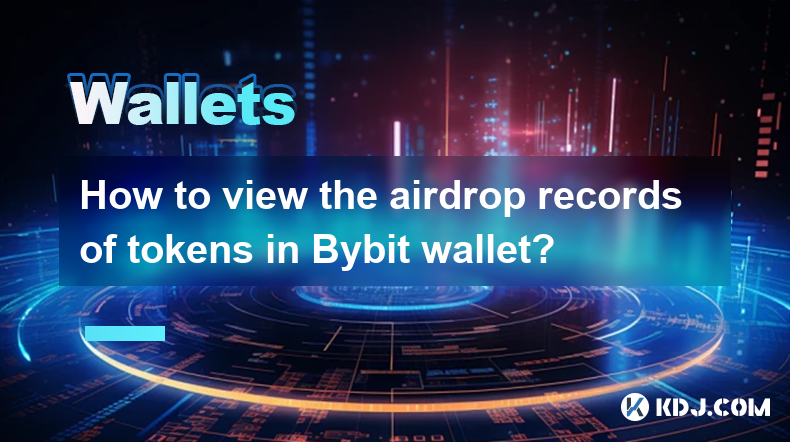
How to view the airdrop records of tokens in Bybit wallet?
Mar 28,2025 at 08:56pm
Understanding Bybit Airdrops and Their Record KeepingBybit, a popular cryptocurrency exchange, occasionally distributes airdrops – free tokens – to its users. These airdrops are usually given as rewards for participation in specific events or for holding certain cryptocurrencies on the platform. However, locating these airdrops within your Bybit wallet...

How does Trust Wallet transfer money across chains?
Mar 28,2025 at 10:49pm
Understanding Cross-Chain Transfers with Trust WalletTrust Wallet doesn't directly 'transfer money' in the traditional sense. Instead, it facilitates the movement of cryptocurrency assets between different blockchains. This process, known as a cross-chain transfer, involves several steps and often utilizes intermediary protocols or bridges. Understandi...

How to participate in IDO (Initial Decentralized Offering) in Trust Wallet?
Mar 28,2025 at 10:42pm
Understanding IDOs and Trust Wallet's RoleInitial Decentralized Offerings (IDOs) are a fundraising method used by cryptocurrency projects to raise capital. Unlike Initial Coin Offerings (ICOs), IDOs leverage decentralized exchanges (DEXs) to distribute tokens, often minimizing the risks associated with centralized platforms. Trust Wallet, a popular mob...

How to transfer assets between Trust Wallet and MetaMask wallet?
Mar 28,2025 at 09:56pm
Understanding the ProcessTransferring assets between Trust Wallet and MetaMask involves moving your cryptocurrencies from one digital wallet to another. This process requires careful attention to detail to avoid errors and potential loss of funds. Both Trust Wallet and MetaMask are popular choices, but they function differently. Trust Wallet is a custo...

How to set transaction fees in Trust Wallet?
Mar 28,2025 at 10:36pm
How to Set Transaction Fees in Trust Wallet Trust Wallet, a popular mobile cryptocurrency wallet, allows users to manage their digital assets efficiently. However, understanding and setting transaction fees, or gas fees as they are often called, is crucial for successful transactions. This article will guide you through the process, explaining the nuanc...

How to modify the node settings of Bybit wallet?
Mar 28,2025 at 10:21pm
Bybit, a popular cryptocurrency exchange, offers a wallet service that allows users to store and manage their digital assets. Understanding and modifying your Bybit wallet's node settings is crucial for optimal performance and security. However, it's important to note that Bybit's wallet doesn't directly expose node settings in the same way as some oth...

How to view the airdrop records of tokens in Bybit wallet?
Mar 28,2025 at 08:56pm
Understanding Bybit Airdrops and Their Record KeepingBybit, a popular cryptocurrency exchange, occasionally distributes airdrops – free tokens – to its users. These airdrops are usually given as rewards for participation in specific events or for holding certain cryptocurrencies on the platform. However, locating these airdrops within your Bybit wallet...
See all articles























































































